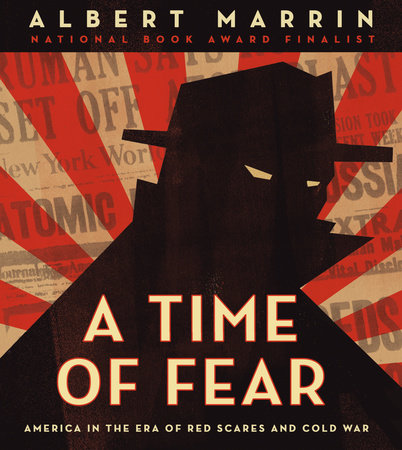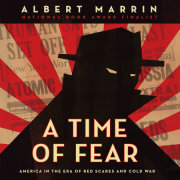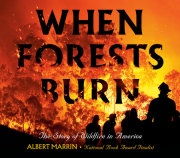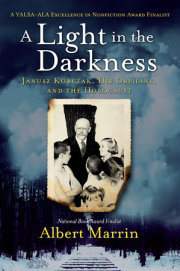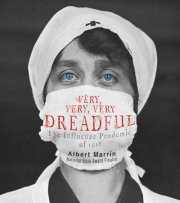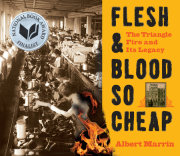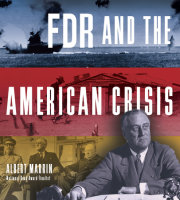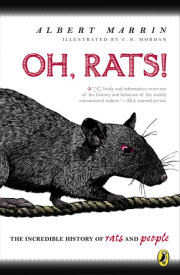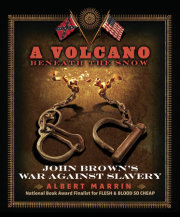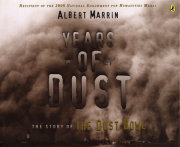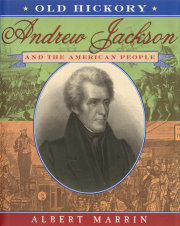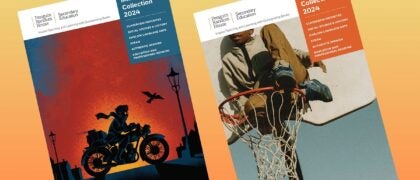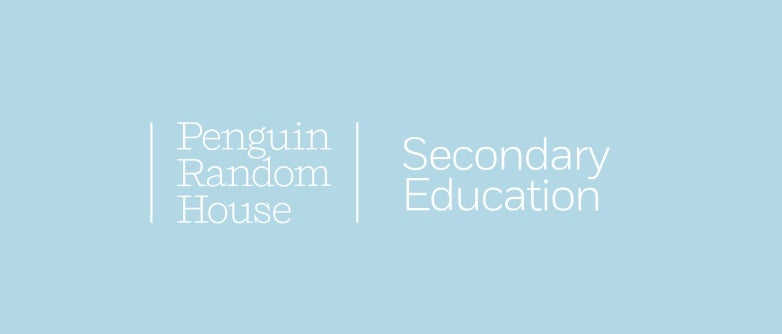I
FRIGHTENED VICTORS
The people are shivering in their boots over Bolshevism, and they are far more scared of Lenin than they ever were of the Kaiser [German emperor]. We seem to be the most frightened victors that the world ever saw.
--Walter Lippmann, journalist (1919)
RED OCTOBER
Lenin bided his time. After arriving in Petrograd, he planned and plotted, aided by German money equal to $1 billion in today’s dollars. Secret German funding was critical, enabling the Bolsheviks to buy a printing plant, publish newspapers, turn out protest signs reading “The Germans Are Our Brothers,” and pay agitators to undermine morale in the army. “Lenin’s entry into Russia successful,” noted a German army intelligence report. “He is working exactly as we would wish.”1
In October 1917--“Red October”--Lenin gave the word. Bands of armed Bolsheviks called Red Guards, joined by radicalized soldiers, sailors, and workers from the soviets, swung into action. In a series of swift moves, they stormed government buildings, taking control of the capital. But instead of allowing free elections, as millions had hoped, the Bolsheviks began to reshape Russian society. Ruthlessly tearing the economy from private hands, they ordered businesses and factories, buildings and land, seized and declared public property. Depositors could only withdraw a small amount from their bank accounts each month; safe-deposit boxes were broken open and valuables confiscated for “the people’s use.” An edict forbade hiring anyone for wages, because employing others in order to profit from their labor was deemed “class exploitation.” Private trade, even for small-shop keepers, was abolished.
To feed the newly created Red Army, “food brigades,” teams of activists sent from the cities, forced peasants to turn over much, and in many cases all, of their crops. Infuriated peasants reacted by cutting open food thieves’ bellies and filling them with grain as a sign of contempt. The Red Army retaliated, smothering rebels hiding in forests, including women and children, with poison gas.
For Lenin, there was no such thing as an honest difference of opinion. He was an aggressively intolerant man, whose nature didn’t allow for suffering “idiots.” The Bolshevik leader, an aide noted, “didn’t give a damn for the opinions of others.” He saw no reason to, for Marxism was his absolute truth, beyond question or criticism; anyone who disagreed was by definition not only wrong, but evil. Lenin saw such people as scarcely human. To him, they were “slime and filth,” “blockheads,” “bastards,” “prostitutes,” “dirty scum,” “shits,” “cretins,” “Russian fools,” “windbags,” “stupid hens,” and “silly old maids.” They deserved a bullet in the head, not the give-and-take of reasoned debate. Bullets were very useful things, in Lenin’s view. He’d ask, in all sincerity, “How can you make a revolution without firing squads?” By its very nature, Bolshevik-style revolution meant unbridled violence.2
Lenin and his followers rejected traditional values and moral norms. For the vast majority of Europeans and Americans, these derived from the Ten Commandments and the Golden Rule, which tell us to act toward others as we would have them act toward us. Bolsheviks denounced these principles as “putrid” and silly. “Is there such a thing as communist morality?” Lenin asked a youth group. “Of course, there is. . . . Our morality stems from the interests of the class struggle of the proletariat. . . . We say: morality is what serves to destroy the old exploiting society and to unite all the working people around the proletariat, which is building up a new, communist society. . . . Communist morality is that which serves this struggle and unites the working people against all exploitation, against all petty private property.” In practical terms, this meant that nothing was out of bounds, nothing innately immoral, if it served the Cause. Lenin explained: “We must be ready to employ trickery, deceit, law-breaking and concealing truth. We can and must write in a language which sows among the masses hate, revulsion, scorn and the like, toward those who disagree with us.” In short, Lenin held that the end justified the means--any means, including the murder of whole categories of human beings labeled “class enemies” and “counterrevolutionaries.”3
Lenin further argued that Bolsheviks must always be “politically correct,” an expression he used and may actually have invented. Nowadays, political incorrectness refers to language deemed offensive to others, often about race and gender. For Lenin’s followers, however, political correctness meant that any position the Communist Party of the Soviet Union took was valid, because its ideology made it infallible. Yet a position could be instantly reversed, and without the slightest misgiving. For example, Lenin said that the politically correct way was not for the courts to put checks on violence, “but to substantiate it and legitimize it in principle,” because “Marxists judge the results, not the methods.” On the other hand, being “politically incorrect” meant believing or doing anything that harmed Soviet interests.4
Though trained as a lawyer, Lenin, as a Marxist revolutionary, rejected any notion of “Equal Justice Under the Law,” the motto engraved on the front of the United States Supreme Court building in Washington, DC. In fact, he scorned the very idea of the rule of law. As understood in democracies, well-defined and enforceable laws protect citizens from government overreach, from officials driven by greed, passion, stupidity, and bigotry. Lenin, however, defined the dictatorship of the proletariat as “unrestrained, lawless power, based on force in the simplest sense of the word. It is nothing other than power totally unlimited by laws, absolutely unrestrained by regulations and based directly on the use of force.” We cannot say it too often: Bolsheviks deemed any action in the service of their ideology moral, regardless of the human costs.5
People from all walks of life, especially army officers still loyal to the former czar, rebelled against the new rulers. In the civil war that followed Red October (late 1917 to early 1922), a loose alliance of anti-Bolshevik forces known as the “Whites,” aided by Great Britain and the United States, fought the Bolsheviks, or the “Reds.” Both sides were merciless toward foes. The Bolsheviks, officially and stridently, declared the Red Terror. We must note that terrorism and terror are not the same. Terrorism is the weapon of the angry and weak against a stronger foe they have no chance of defeating in open battle. Its methods include assassination, hostage taking, and bombing specific targets.
Terror, however, is very different. It is government by fear--an organized system of violence by the state to create a climate of insecurity. In Russia, the Bolsheviks turned to terror, not democracy, to enable them to control the majority who yearned only for “peace, land, and bread.” The aim of the Red Terror was to crush any and all opposition. Grigori Zinoviev, one of Lenin’s favorite henchmen, excluded whole categories of the population from humanity. “We must,” he said with all the conviction of the fanatic, “carry with us 90 million out of the 100 million of Soviet Russia’s inhabitants. As for the rest, we have nothing to say to them. They must be annihilated.” Yet Zinoviev was merely echoing his leader. In the infamous “Hanging Order,” Lenin instructed Bolsheviks to “choke and strangle” hostages “in such a way that people for hundreds of miles around will see, tremble, know and scream out.” In effect, snuffing out millions of human lives meant nothing when it came to gaining and securing Bolshevik power.6
The instrument of the Red Terror was the Cheka (an abbreviation of the Russian for the All-Russian Extraordinary Commission for Combating Counterrevolution and Sabotage). “Chekists” believed that their superior virtue and lofty intentions gave them license to kill with a clear conscience. For Chekists, their victims were not beings with God-given rights, but obstacles to progress. “Our humanity,” declared their magazine, The Red Sword, “is absolute because it rests on a new ideal. To us, everything is permitted, for we are the first to raise the sword not to oppress races and reduce them to slavery, but to liberate humanity from its shackles. . . . Blood? Let blood flow like water! . . . For only through the death of the old world can we liberate ourselves.”7
Lenin charged the Cheka with enforcing “revolutionary legality”--in reality, absolute lawlessness. Those who fell into the Cheka’s hands were to be judged according to their social class. Cheka chief Martin Latsis ordered his men “not to look for evidence as proof that the accused has acted or spoken against the Soviets. First you must ask him to what class he belongs, what his social origin is, his education and profession. These are the questions that must determine the fate of the accused. That is the meaning of the Red Terror.” The head of the Soviet court system, Nikolai Krylenko, added: “We must execute not only the guilty. Execution of the innocent will impress the masses even more.”8
Even under the most oppressive czar’s, such as Ivan the Terrible (who ruled from 1547 to 1584), Russia had never seen state killing on such a scale. Whereas the oppressive czars executed 6,321 people for capital crimes, primarily murder and treason, between 1825 and 1917 the Cheka shot some fifteen thousand “class enemies” and “counterrevolutionaries” in just a two-month period in 1918. The Red Terror also claimed the imperial family. On Lenin’s orders, in July, Czar Nicholas II, his wife, his son, his four daughters, and four of his servants were shot. In the gruesome aftermath, their bodies were dismembered, ignited with gasoline, the larger bones dissolved in sulfuric acid, and the remainder thrown down an abandoned mine shaft.9
Calling themselves “engineers of the human soul,” Bolsheviks believed they had the right to shape the minds and mold the lives of millions of ordinary people--people they had never met and knew nothing about. Words like “spirit” and “soul” did not exist in their vocabulary. As Karl Marx, their prophet, taught, humanity’s spiritual aspect was a myth, and therefore so was religion. Marx reviled belief in God as “the opium of the people,” because it supposedly dulled their wits, making them incapable of resisting injustice.
Lenin thought religion “the most dangerous baseness, the most vile infection . . . a poison which is as sweet as sugar-candy . . . but truly sickening.” Guided by this belief, the Bolsheviks launched an all-out war on organized religion. They began by seizing all the lands and buildings of the Russian Orthodox Church, until then the official state church, and removing all schools from its control. This was followed by unspeakable atrocities committed against priests, monks, and nuns. Tens of thousands were shot, nailed to doors, thrown into cauldrons of boiling tar, scalped, buried alive, and drowned. Lenin relished these outrages, demanding to be informed “on a daily basis” how many priests had been killed. During the 1920s, Bolsheviks formed the League of the Militant Godless, a mass organization claiming 5.5 million members, to spread hatred of religion along with atheism, disbelief in the existence of God and his moral law.10
The Bolshevik Revolution and Russian Civil War claimed the lives of an estimated 13 million people--killed in battle, died of wounds, murdered by the Cheka, starved to death--and forced 2 million Russians into exile, an immense brain drain from which the USSR would suffer for decades. Among the exiles were some of the nation’s best minds: painters, dramatists, dancers, musicians, philosophers, linguists, scientists, mathematicians, and religious thinkers. In decades to come, these exiles and the young people they trained and inspired would enrich Western scholarship, culture, and spiritual life. Lenin, however, had only contempt for “those smart little intellectuals . . . who fancy themselves the nation’s brains. In point of fact, they are not the brains, but shit.”11
Lenin and his followers believed that getting rid of these “former people” was but the first step in a grand and glorious design. Bolsheviks regarded humans as nothing special, merely aspects of nature, like water and rocks and lice. Purely material beings, as Lenin explained, humans had no innate dignity or aspirations, but only their five senses: sight, hearing, touch, smell, and taste. This made them merely “raw material,” malleable as wax, and therefore capable of being “processed” by the state. By changing the environment, Lenin declared, the Communist state could shape people according to Marxist principles. He declared, “Man can be corrected. Man can be made what we want him to be.” Thus, communism promised to create a higher, healthier, happier type of humanity. Called Homo sovieticus--Latin for “Soviet man”--this new man would be a selfless creature who lived only to serve the community, content to be a cog in the wheel of a great machine, or a worker ant instinctively sacrificing for its colony. Bolsheviks had absolute faith in their ability and right to remake human nature. It was not up to ordinary, “flawed” human beings to decide their fate, but to their enlightened masters. If need be, said Lenin, “we will drive mankind to happiness by force!”12
Leon Trotsky, the father of the Red Army, was ecstatic at the thought of the paradise sure to emerge with the remaking of human nature. Guided by the Communist Party of the Soviet Union (CPSU), Trotsky wrote, people everywhere would change physically and mentally, developing into beings more handsome, intelligent, and creative than had ever existed.
I: Frightened Victors
1. Sean McMeekin, The Russian Revolution: A New History (New York: Basic Books, 2017), 132–135.
2. Dmitri Volkogonov, Autopsy for an Empire: The Seven Leaders Who Built the Soviet Regime (New York: Free Press, 1998), 9; Orlando Figes, A People’s Tragedy: A History of the Russian Revolution (New York: Viking, 1996), 391, 630.
3. V. I. Lenin, “The Tasks of the Youth Leagues,” October 2, 1920, marxists.org/archive/lenin/works/1920/oct/02.htm Department of State Bulletin vol. 85 ((June 1989), 86.
4. Richard Pipes, Russia Under the Bolshevik Regime (New York: Knopf, 1993), 401; Lenin, “The Tasks of the Youth Leagues”; Max Eastman, Reflections on the Failure of Socialism (New York: Devin-Adair, 1955), 87.
5. Richard Pipes, Communism: A History (New York: Modern Library, 2001), 95; Dmitri Volkogonov, Lenin: A New Biography (New York: Free Press, 1994), 236–237.
6. W. Bruce Lincoln, Red Victory: A History of the Russian Civil War (New York: Simon & Schuster, 1989), 132; Richard Pipes, A Concise History of the Russian Revolution (New York: Knopf, 1995), 224; Lenin, “Hanging Order,” November 8, 1918, loc.gov/exhibits/archives/as2kulak.html.
7. Courtois, The Black Book of Communism, 102, italics added; Pipes, Russia Under the Bolshevik Regime, 512. See also George Leggett, The Cheka: Lenin’s Political Police (New York: Oxford University Press, 1986).
8. Figes, A People’s Tragedy, 534–535; Pipes, A Concise History of the Russian Revolution, 224.
9. Courtois, The Black Book of Communism, xviii.
10. Figes, A People’s Tragedy, 732, 743; Alexander N. Yakovlev, A Century of Violence in Soviet Russia (New Haven, CT: Yale University Press, 2002), 156, 161; McMeekin, The Russian Revolution, 331. Daniel Peris’s Storming the Heavens: The Soviet League of the Militant Godless (Ithaca, NY: Cornell University Press, 1998) is a scholarly account of this important subject.
11. Rene Fulop-Miller, The Mind and Face of Bolshevism: An Examination of Cultural Life in Russia (New York: Knopf, 1928), 104–105; Pipes, A Concise History of the Russian Revolution, 406; Yakovlev, A Century of Violence in Soviet Russia, 106.
12. Volkogonov, Autopsy for an Empire, 3; Donald Rayfield, Stalin and His Hangmen: The Tyrant and Those Who Killed for Him (New York: Random House, 2004), 119, 121.
Copyright © 2020 by Albert Marrin. All rights reserved. No part of this excerpt may be reproduced or reprinted without permission in writing from the publisher.

